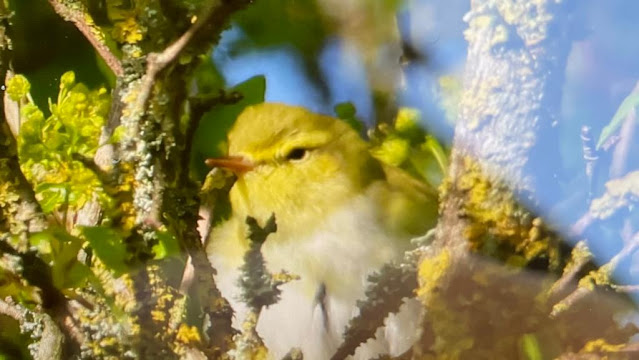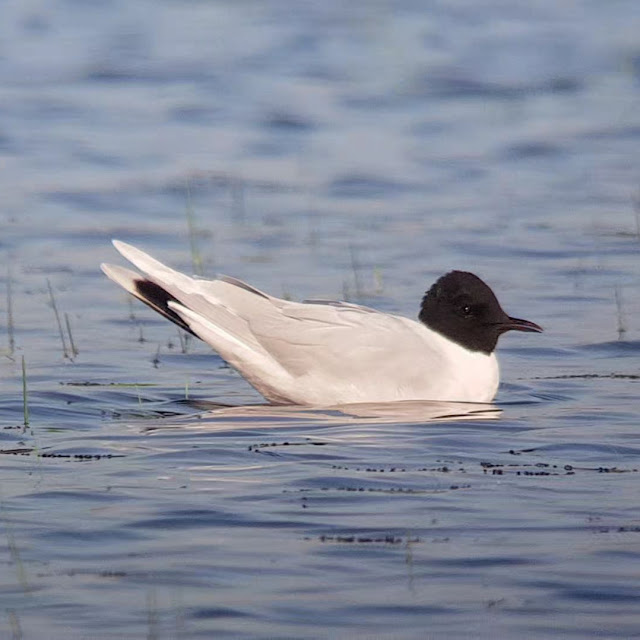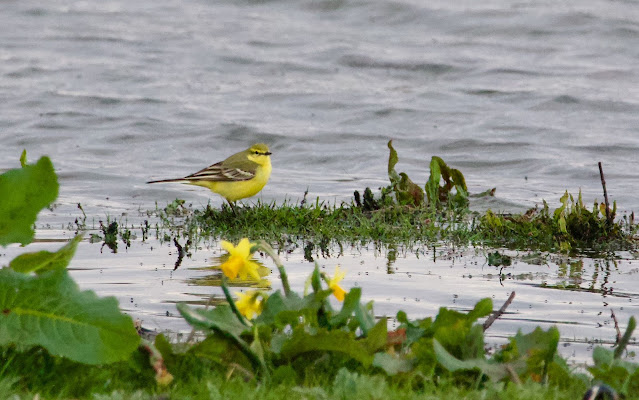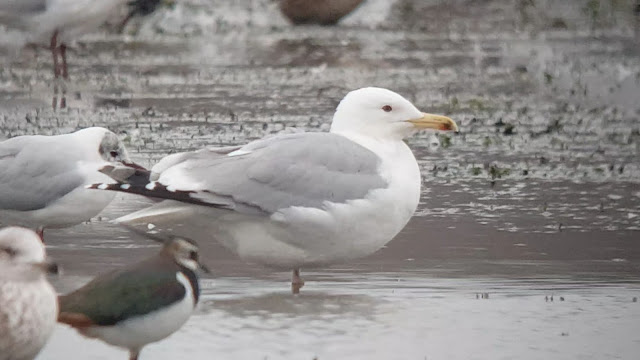It's been a really good month on the Port Meadow patch, especially if you consider that it's November which is not normally known for producing lots of good birds. The clear highlight of the month was a red-head Smew, found by Steve Lavington in the gloom late on the afternoon of the 16th. Those who were able to get out quickly got to see it but it disappeared before sunset and wasn't seen again the next day. Smew is a less than annual county bird and the last bird in the city was 75 years ago at Godstow Lock!
 |
| The distant Smew, courtesy of Steve Lavington |
While we are talking about ducks, the extended flood waters have been pulling in some other diving duck species as well as the Smew. A Red-creasted Pochard, which is less than annual on the patch, was seen for half a day on the 29th. In addition on the day after the Smew was found there were 4 Pochard and 10 Tufted Duck in the morning. Apart from these, it's been more of the usual fare with up to 20 Pintail and up to 4 Shelduck in amongst the usual Wigeon, Teal and Shoveler. The 7 dodgy White-fronted Geese turned up one evening though the Barnacle Geese seem largely to have moved on to pastures new and were only seen on one or two days.
Onto waders next and we've had a bit more interest this month with a Black-tailed Godwit for the end of the month, up to 15 Dunlin, up to 100 Snipe, up to 500 Golden Plover and a single fly-over Grey Plover. There was also a Cattle Egret sighting though the flock seems to have moved on now.
On the gull front, the roost is gradually building though at the moment there are not very many large gulls about. We have been fortunate enough to host a 1st winter Caspian Gull most evenings in the roost though.
 |
| 1w Yellow-legged Gull and 1w Caspian Gull, courtesy of Thomas Miller |
In terms of passerines, we had the first Siberian Chiffchaff of the season with a gorgeous bird trapped and ringed in Burgess Field. There is speculation as to whether this might be the returning bird from last year. A pair of Stonechat have been faithful to the thistles at the southern end of the Meadow all month. A Cetti's Warbler has taken up residence in the Trap Grounds. Let's hope it finds it to its liking and sticks around.
 |
| Siberian Chiffchaff, courtesy of Thomas Miller |
Predators include a Tawny Owl calling up in Wolvercote one evening and a Peregrine seen hunting over the floods. A Great-White Egret was seen flying along the river one day and a pair of Water Rail are in residence in the Trap Grounds reedbed for the winter. Finally, a Woodcock was flushed from Burgess Field one evening.
We are now into the last month of the year. The year list is currently on an astonishing 148, absolutely smashing last year's record total of 141. In fact, I am wondering if we can top 150 this year. With Marsh Tit, Jack Snipe, Brambling, both Partridges and both winter Swans still needed there are plenty of potential ticks that could get us across the line. There's even the chance of a Waxwing, given that it seems to be a good year for them. With the gull season properly kicking off this month as well, there's still plenty to look for out there.


















































